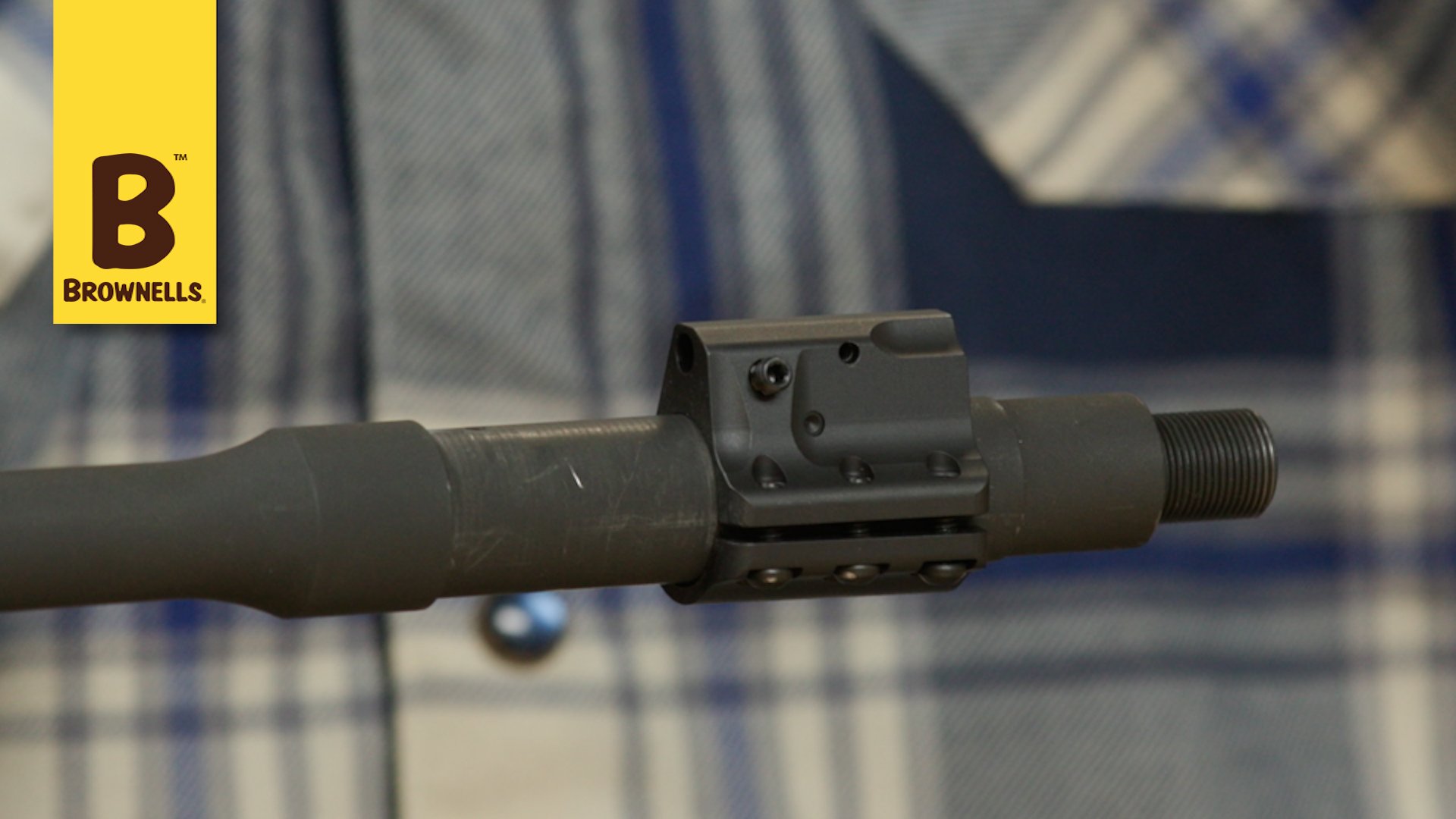Quick Tip: AR-15 Gas Block Alignment
2 years ago
Brownells Gun Tech™ Caleb Savant is here to set the record straight once and for all about AR-15 gas block alignment. Getting the gas block correctly aligned IS important, but it's not as difficult or fiddly as you might think it is. Some folks insist that when you're installing a gas block on a free-floating barrel, you should not push it tight against the barrel's gas block shoulder. They say you should leave a small gap between the gas block and the shoulder so there's room for the ring on a two-piece snap-on M4- or A2-type handguard. You should do this even when you're not using that type of handguard because the gas block is actually DESIGNED to require the gap. If you don't provide the gap, they say, the gas hole in the block won't line up with the gas port in the barrel.
This is actually NOT TRUE for gas blocks on 5.56 / .223 AR-15s. The gas hole in the gas block is larger than the barrel's gas port, so you don't have to be OCD precise about lining up the holes. Caleb uses his handy borescope to show us what's going on inside the barrel when he pushes the gas block right up against the shoulder of the barrel. Yep, the holes line up with no obstruction of the gas flow.
If the barrel you're working with has a dimple for a gas block setscrew, go ahead and align the block based on the dimple. But if the barrel is not dimpled OR if you're using a clamp-on gas block, it's totally OK to run the gas block all the way up against the shoulder. The gas will still flow, and your AR will cycle. NOTE: This rule applies consistently only to AR-15s chambered in 5.56 NATO / .223 Remington.
{"name":"RIGID 26\" RIFLE BORESCOPE WITH 5\" IPS SCREEN","id":"1134128","price":199.99,"brand":"Teslong","category":"Tools & Cleaning/Bore & Barrel Tools/Bore Lights & Bore Scopes","variant":"","quantity":0.0,"dimension32":"","dimension33":"430103297","dimension34":"Rigid 26\" Rifle Borescope With 5\" IPS Screen","dimension35":"TLCL","dimension36":"","dimension37":"No","dimension38":"Oversea shipping: No","dimension39":"In stock","dimension40":"Yes","dimension41":4.9,"dimension42":10,"dimension43":4,"dimension44":"NONE","dimension45":"Yes","dimension46":"Coupon","dimension47":null,"coupon":null}












